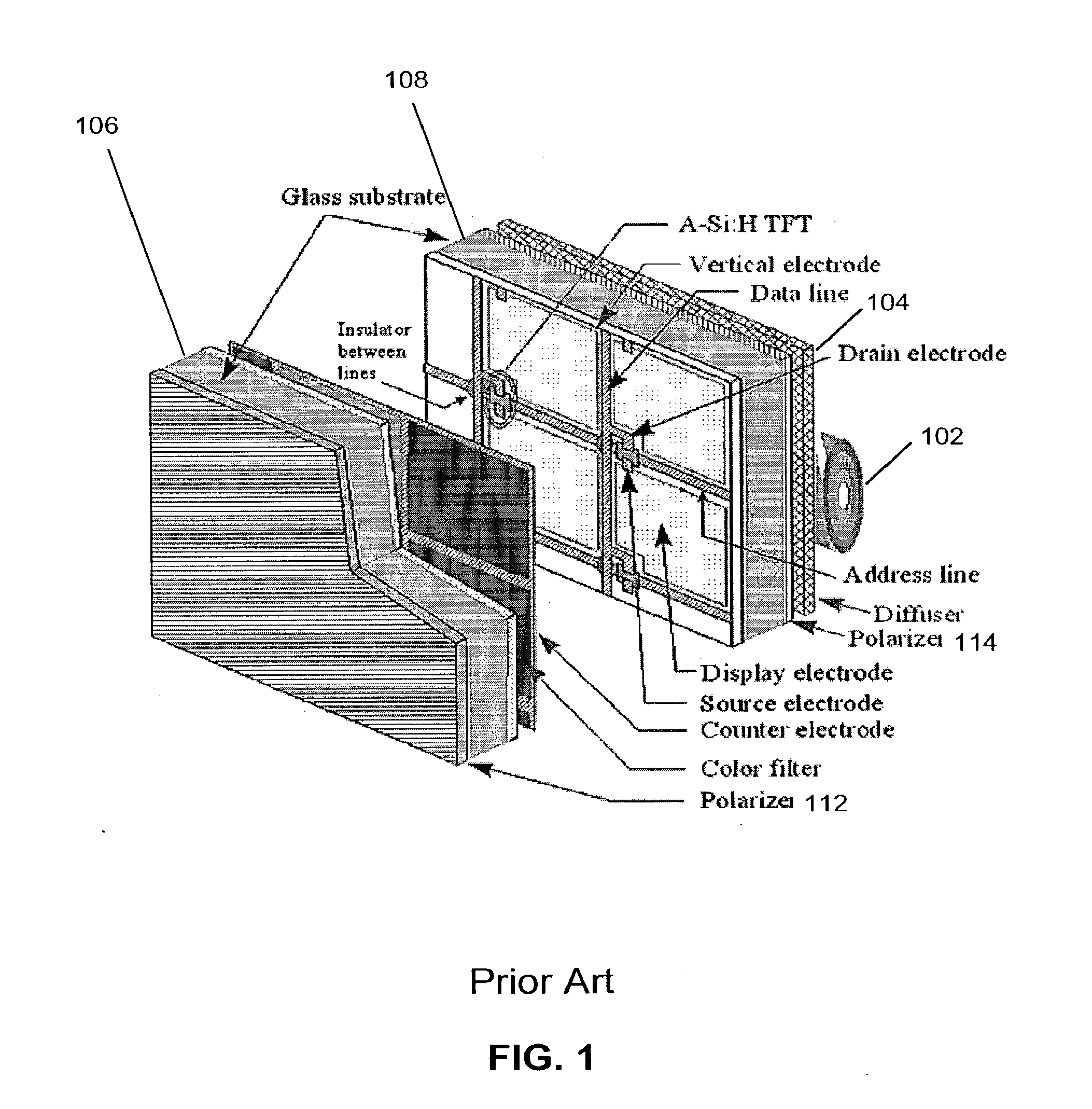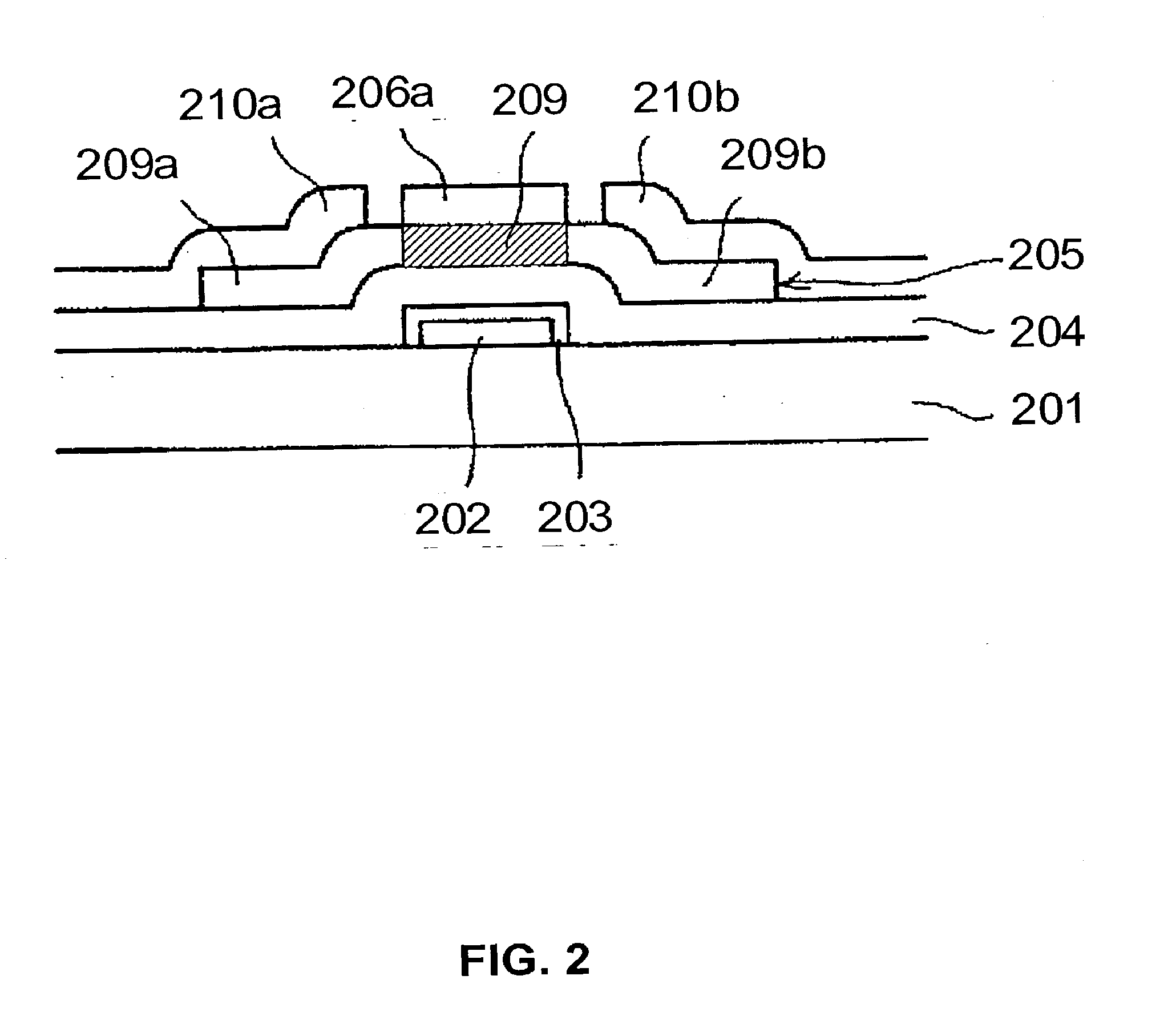Low Temperature Process for TFT Fabrication
a low temperature process and fabrication technology, applied in the direction of transistors, electrical devices, semiconductor devices, etc., can solve the problems of tft arrays, tft-lcd market is the cost of manufacturing such displays, and the technique imposes limitations on maimer, etc., to improve the fabrication of tfts, eliminate the peeling of the insulator, and promote adhesion
- Summary
- Abstract
- Description
- Claims
- Application Information
AI Technical Summary
Benefits of technology
Problems solved by technology
Method used
Image
Examples
example 1
[0057] Processing was performed at a substrate temperature of 250° C. and an RF power of 400 watts. Silane gas flow into the PECVD chamber was 400 standard cubic centimeters per minute (scem). PH3 was 0.5% balanced in a carrier gas. The gas flow of this PH3 mixture into the PECVD chamber was 1000 sccm. Hydrogen gas flow into the PECVD chamber was 500 sccm. The reaction resulted in the formation of an n+ doped amorphous silicon film at a deposition rate of 830 Angstroms / minute. The resistance of the resulting n doped amorphous silicon film was 140 ohm cm.
example 2
[0058] Processing was performed at a substrate temperature of 250° C. and an RF power of 150 watts. The gas flow of silane into the PECVD chamber was 240 standard cubic centimeters per minute (scem). PH3 was 0.5% balanced in a carrier gas. The gas flow of this PH3 mixture into the PECVD chamber was 600 seem. The gas flow of hydrogen into the PECVD chamber was 600 sccm. The reaction resulted in the formation of the n+ doped amorphous silicon film at a deposition rate of 570 Angstroms / minute. The resistance of the resulting n+ doped amorphous silicon film was 120 ohm cm.
example 3
[0059] Processing was performed at a substrate temperature of 150° C. and an RF power of 100 watts. The gas flow of silane into the PECVD chamber was 200 standard cubic centimeters per minute (sccm). PH3 was 0.5% balanced in a carrier gas. The gas flow of this PH3 mixture into the PECVD chamber was 400 seem. The gas flow of hydrogen into the PECVD chamber was 800 seem. The reaction resulted in the formation of the n+ doped amorphous silicon film at a deposition rate of 120 Angstroms / minute. The resistance of the resulting n+ doped amorphous silicon film was 220 ohm cm.
PUM
 Login to View More
Login to View More Abstract
Description
Claims
Application Information
 Login to View More
Login to View More - R&D
- Intellectual Property
- Life Sciences
- Materials
- Tech Scout
- Unparalleled Data Quality
- Higher Quality Content
- 60% Fewer Hallucinations
Browse by: Latest US Patents, China's latest patents, Technical Efficacy Thesaurus, Application Domain, Technology Topic, Popular Technical Reports.
© 2025 PatSnap. All rights reserved.Legal|Privacy policy|Modern Slavery Act Transparency Statement|Sitemap|About US| Contact US: help@patsnap.com



